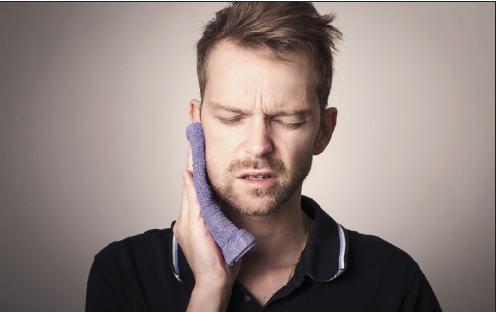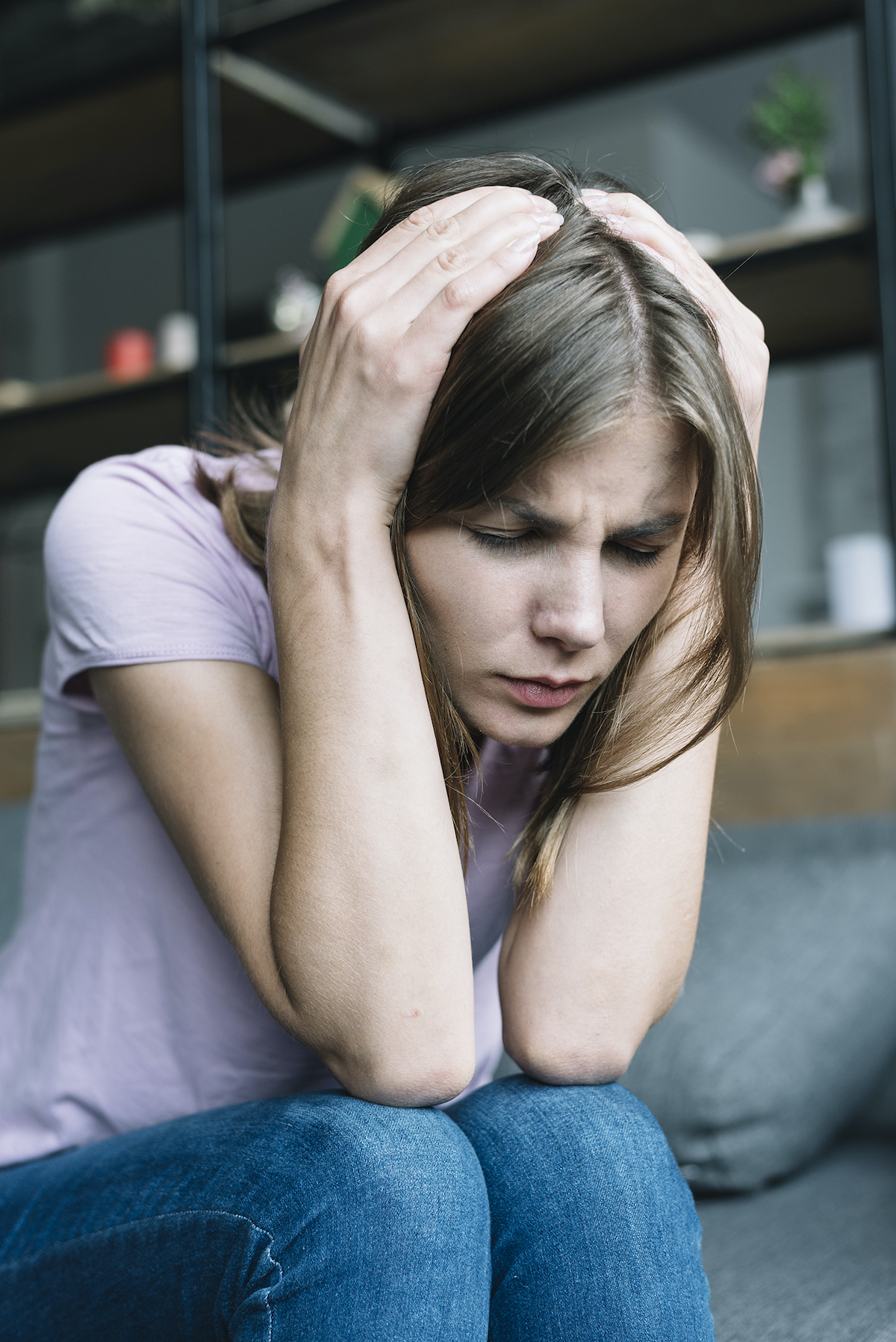Migraine is one of the most common conditions in the world, according to the Migraine Research Foundation. Migraines can run in families with children and adults known to have them.
In America, the Migraine Research Foundation estimate that almost 12 percent of people suffer from migraine headaches.
Migraine headaches are not simply a severe headache. Migraines are part of a neurological condition and often have other symptoms, including:
nausea
vomiting
tingling or numbness in the hands or feet
visual changes
sensitivity to sound, light, or smell
Migraines can be debilitating and a chronic condition that can impact daily life for some people.
There are many different medications used to treat and prevent migraines. But some people prefer to use natural treatments as alternatives or to supplement medical treatment.
Here are 15 natural remedies for migraines that people may want to try:
1. Acupressure
Acupressure involves the application of pressure to specific parts of the body. Stimulating specific points of the body in this way is believed to release muscle tension and alleviate pain.
One popular pressure point is the LI-4 point in the space between the base of the left thumb and pointer finger. Applying firm but not painful circular pressure to the LI-4 point, using the opposite hand for 5 minutes, may relieve headache pain.
2. Diet changes
Many people who get migraines notice certain foods can trigger them. Changing diet or eating patterns to avoid triggers may help to prevent migraines in the future.
Common food triggers for migraines include:
processed foods
red wine
alcohol
chocolate
caffeinated beverages
Being aware of what might be triggering a migraine is critical. Some people use a food diary or migraine journal to keep track of potential triggers.
3. Essential oils
Essential oils are often used as natural remedies or as an antimicrobial in homemade cleaning products.
Lavender is an essential oil often recommended as a remedy for stress, anxiety, and headaches. Another small study published in European Neurology found that lavender oil inhalation helped reduce the severity of migraine headaches in some people. The results are encouraging, but further research using larger sample sizes is needed.
4. Ginger
A 2014 study using 100 participants compared the effectiveness of ginger powder with sumatriptan, a common migraine drug. The researchers found the effectiveness of ginger was statistically comparable to sumatriptan, and users were as willing to continue with either treatment.
One definite benefit for people who get migraines is that using ginger cannot hurt and, aside from an existing allergy, there are no side effects to using it.
5. Stress management
Stress is a common trigger for migraines. Stress can also create a cycle where migraine pain worsens the stress, which then triggers another migraine.
Finding outlets for stress, such as journaling, exercise, or meditation, may help to prevent future migraines. People can also try taking a stress management class. They may choose to take a warm bath or listen to music, as well, to try to relieve the stress they feel.
By doing these positive actions, a person is choosing to take control of their body’s reaction to the stress in their life.
6. Yoga or stretching
Yoga is thought to help improve blood flow and reduce muscle tension, which can help relieve symptoms for people who get migraines.
A comprehensive 2014 study compared conventional migraine treatment with and without the addition of regular yoga practice.
The researchers found that the group who participated in a yoga program had greater relief than the group who joined in conventional treatment alone.
7. Biofeedback therapy
Biofeedback is a therapy that people use to trigger the release and relaxation of tight muscles.
Biofeedback takes practice and training. Sensors placed on the muscles feed into a small machine that gives real-time feedback about muscle tension, allowing users to release the tight areas better.
Placement of sensors along the forehead, jawline, or trapezius muscles in the shoulders can help to target muscles that might be triggering migraine pain.
8. Acupuncture
An extensive 2012 systematic review looked at studies that evaluated the effectiveness of acupuncture for treating migraines and other conditions.
The study authors found that acupuncture is an effective treatment choice for people with migraine headaches, although they pointed out that other factors might be playing a part also.
People who are interested in using acupuncture for migraines should make sure to find a licensed practitioner for treatment.
9. Massage
Massaging the muscles in the neck and shoulders can help to relieve tension and alleviate migraine pain. Massage may also reduce stress.
People can choose to use a professional masseuse for a massage. Alternatively, taking a tennis ball and using it to do a self-massage along the shoulders and back is another, more cost-effective, option.
10. Herbal supplements
Butterbur and feverfew are two herbal supplements that may be helpful in reducing migraine pain and frequency. A daily dose of 150 milligrams (mg) of butterbur was effective in lowering migraine frequency when taken for about 3 months, according to the American Migraine Foundation.
The foundation suggest feverfew is less effective than butterbur. Feverfew may, however, be helpful for some people.
There are some risks in using these herbs, severe in rare cases, and anyone wanting to try them should speak with their doctor first.
11. Magnesium
Deficiency of magnesium, which is an essential mineral, may trigger migraine aura or a menstrual-migraine headache. A migraine aura is a visual disturbance that occurs at the onset of a migraine. Not everyone who gets migraines will experience a migraine aura.
Research has found that supplementation of magnesium can be useful in reducing the frequency of migraines in some individuals.
People should speak with their doctor before starting to take magnesium, particularly if they have other health conditions.
12. B-complex vitamins
The B vitamins may have an impact on reducing migraine frequency and severity. B vitamins play a role in regulating neurotransmitters in the brain.
B vitamins are water soluble, meaning that excess levels are quickly excreted in the urine and not stored in the body, so it is unlikely someone could take too much. Nevertheless, it is still important to speak with a doctor before starting to take a daily B-complex vitamin.
13. Stay hydrated
Not drinking enough water is a well-known migraine and headache trigger, and it only takes minor dehydration to bring on a headache. Drinking water throughout the day, and maintaining a healthful diet is usually enough to stay sufficiently hydrated. People with severe dehydration may initially need an oral rehydration solution to replace missing electrolytes.
14. Rest
Lack of sleep and too much sleep can be triggers for migraine headaches.
Getting 7–9 hours of restful sleep each night can help to reduce stress and prevent migraines.
15. Compresses
Some people find placing a cold or warm compress on their head can be soothing and help to reduce migraine pain. Many people who get migraines report a preference for a cold compress, but warm or cold can work.
There are few side effects of using this therapy, though people with circulatory problems, diabetes, or skin issues should avoid extremes of temperature.
Takeaway
People need to collaborate with a doctor or migraine specialist to find a treatment regimen that works, even when trying natural remedies.
Keeping a migraine or headache journal can be useful in identifying triggers and effective remedies for migraines.
Sources:
https://migraineresearchfoundation. org/
https://www.medicalnewstoday.com/ articles/322814
Exclusive content from CARE Magazine








